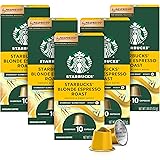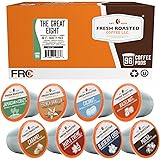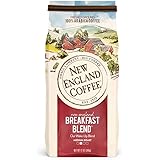Unlock Superior Flavor: Advanced Tips for Your Home Drip Coffee Brewer
There’s a familiar morning ritual many of us cherish: the gentle gurgle of the automatic drip coffee maker, the comforting aroma filling the kitchen, and that first, much-needed sip. Yet, how often does that sip truly live up to the promise of a perfect brew? If your daily cup often falls short, tasting either too weak, too bitter, or surprisingly sour, you’re not alone. Many passionate coffee drinkers face similar challenges, wondering how to coax cafe-quality flavor from their trusty home drip coffee brewer.
The expert in the video above has shared some fundamental insights to elevate your coffee experience. Building on those essential pointers, we’ll dive deeper into the nuances of brewing, exploring advanced techniques and the science behind achieving truly exceptional coffee right in your own kitchen. Mastering these tips can transform your everyday brew from a mere necessity into a genuinely enjoyable experience.
The Critical Role of Brewing Temperature in Your Automatic Drip Brewer
One of the most frequently overlooked factors in brewing stellar coffee at home is water temperature. As highlighted in the video, many conventional automatic drip brewers simply lack the thermal energy to heat water quickly enough to the ideal brewing range. The expert rightly points out that aiming for approximately 200 degrees Fahrenheit (93 degrees Celsius) is paramount for optimal extraction.
This temperature range is not arbitrary; it’s steeped in coffee science. Water that’s too cool (below 195°F / 90°C) leads to under-extraction, resulting in a thin, sour, or grassy flavor profile. The cooler water fails to dissolve enough of the desirable solids from the coffee grounds. Conversely, water that’s excessively hot (above 205°F / 96°C) can cause over-extraction, pulling out bitter compounds and creating an acrid, unpleasant taste, often described as burnt rubber.
Therefore, pre-boiling your water in a kettle before adding it to your brewer’s reservoir is a game-changer. This simple step ensures that the water begins its journey through the brew basket already at or very near the target temperature. By the time it mixes with the cooler coffee grounds in the brew bed and experiences some heat loss during its brief contact, the slurry temperature—the actual temperature of the coffee and water mixture—will stabilize within that coveted 195-205°F range. A wide-spouted, insulated kettle can be an excellent investment, allowing for quick heating and controlled pouring.
The Unseen Impact of Coffee Freshness and Grinding Habits
Freshness is undeniably king in the world of coffee. The video touches on the importance of buying smaller amounts of coffee, perhaps every five days, to ensure peak flavor. This advice is rooted in the chemistry of coffee beans; roasted coffee beans undergo a process called off-gassing, releasing carbon dioxide and other volatile aromatic compounds. These compounds are responsible for much of coffee’s desirable flavor and aroma.
Once roasted, beans begin to lose these volatile compounds and interact with oxygen, leading to oxidation. Oxygen exposure rapidly degrades flavor, introducing stale or cardboard-like notes. Pre-ground coffee accelerates this process exponentially. Grinding coffee significantly increases its surface area, exposing far more of the coffee’s cellular structure to oxygen. A bag of pre-ground coffee can lose a significant portion of its aromatic complexity within minutes, let alone days.
If you’re truly committed to achieving the best possible cup from your home drip coffee brewer, investing in a quality burr grinder is perhaps the single most impactful upgrade you can make. A burr grinder ensures a consistent particle size, which is critical for even extraction. Grinding your beans immediately before brewing preserves those precious volatile compounds, guaranteeing a more vibrant and nuanced flavor profile. Even if mornings are hectic, grinding just enough beans for your immediate brew takes mere seconds and offers profound taste benefits.
Choosing the Right Coffee Beans
Beyond freshness, the quality and origin of your coffee beans play a pivotal role. Opt for specialty-grade coffee beans whenever possible. These beans have been meticulously cultivated, harvested, and processed, and are roasted to highlight their intrinsic characteristics. Engaging with your local roaster or a reputable online vendor allows you to explore different varietals, regions, and roast levels, each offering a unique flavor journey. Consider beans with detailed origin information and transparent sourcing to ensure a high-quality product.
Maintaining Purity: The Absolute Necessity of Brewer Cleanliness
The expert’s emphasis on cleaning your coffee machine often and quickly after brewing is not merely a suggestion; it’s a fundamental tenet of quality coffee preparation. Coffee grounds contain oils, and these oils, along with residual solids, build up rapidly within your automatic drip brewer‘s components, especially in plastic parts like the brew basket, reservoir, and carafe. These residues become rancid quickly, imparting a distinctly unpleasant, bitter, and stale flavor to every subsequent brew.
Imagine trying to enjoy a fine wine from a glass that still holds the remnants of yesterday’s drink – the experience would be ruined. The same principle applies to coffee. Regular cleaning ensures that nothing interferes with the pure flavor of your freshly brewed coffee. Here’s a comprehensive approach to keeping your machine pristine:
- Daily Rinse: After each use, rinse the brew basket, filter holder, and carafe thoroughly with hot water. For the carafe, use a mild, unscented dish soap and a soft brush to remove any lingering coffee oils.
- Weekly Deep Clean: At least once a week, dismantle all removable parts and wash them with warm, soapy water. Pay particular attention to the showerhead where the water dispenses, as coffee particles and oils can accumulate here. A small brush or pipe cleaner can be helpful.
- Monthly Descaling: Mineral deposits from tap water (limescale) accumulate within the machine’s internal heating elements and water lines. This scale buildup impedes heating efficiency and can restrict water flow, leading to under-extracted coffee and eventually damaging the machine. Descale your brewer monthly, or more frequently if you live in an area with hard water.
Effective Descaling Practices
To descale, follow these steps:
- Empty the water reservoir and brew basket.
- Fill the reservoir with a solution of equal parts white vinegar and water, or use a dedicated coffee machine descaling solution according to product instructions.
- Run a brewing cycle until about half the solution has been dispensed.
- Turn off the machine and let it sit for 30 minutes to an hour, allowing the solution to break down mineral deposits.
- Complete the brewing cycle.
- Follow with at least two full cycles of clean, fresh water to flush out any remaining descaling solution and residue.
Regular maintenance ensures your brewer operates at peak performance, delivering the ideal brewing temperature and water flow for superior coffee extraction.
Fine-Tuning Your Flavor: The Art of Grind Adjustment
As the video briefly notes, if your coffee isn’t tasting quite right—perhaps too sour (under-extracted) or too bitter (over-extracted)—the grind size is often the culprit. The expert refers to a previous video on this topic, and it’s a critical area for anyone seeking to master their home drip coffee brewer.
Grind size directly influences the rate of extraction. A coarser grind means less surface area exposed to water, leading to slower extraction. A finer grind means more surface area, leading to faster extraction. For most automatic drip brewers, a medium-fine to medium grind is typically ideal. It should resemble coarse sand or table salt.
If your coffee tastes sour, it’s likely under-extracted, meaning the water didn’t have enough time or surface area to dissolve enough solids. Try grinding a bit finer. This increases surface area, allowing for more efficient extraction. If your coffee tastes bitter, it’s probably over-extracted, with too many undesirable compounds pulled from the grounds. In this case, try a slightly coarser grind. This reduces surface area, slowing down extraction and preventing the release of those bitter compounds.
Making small, incremental adjustments to your grind size and noting the changes in flavor will help you dial in the perfect setting for your specific beans and brewer. This iterative process is how professional baristas achieve consistency and excellence. Remember, the perfect grind can significantly enhance the flavor profile and overall enjoyment of your automatic drip brewer coffee.







